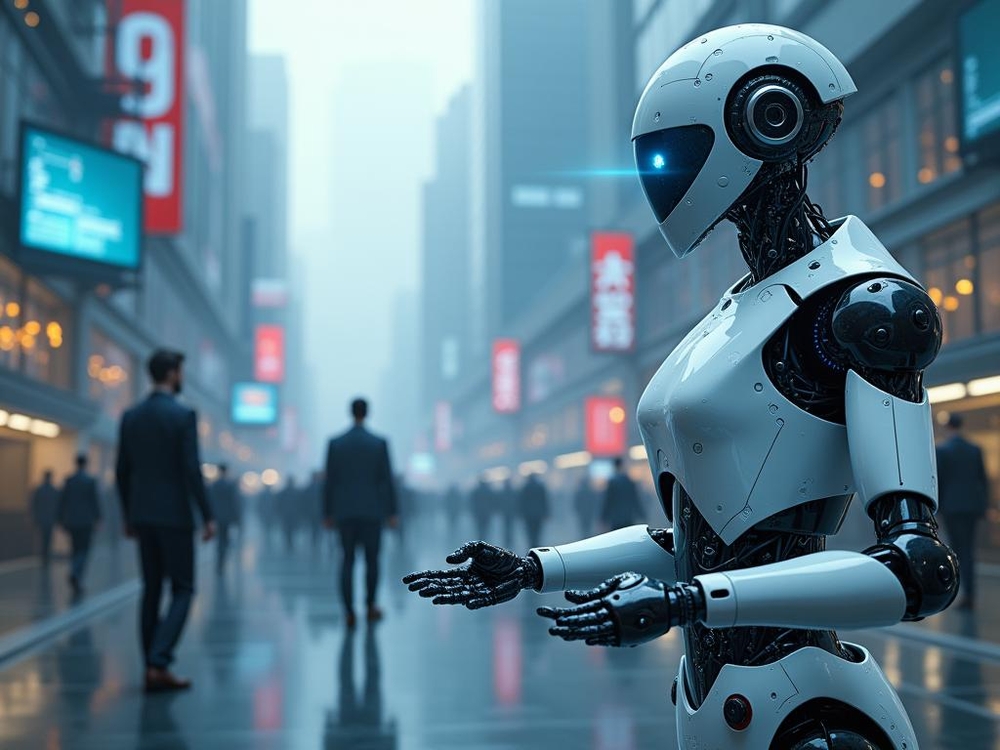Published
- 3 min read
Microsoft Magma: The New AI Agent Controlling Robots

Microsoft’s new AI agent can control software and robots
Magma could enable AI agents to take multistep actions in the real and digital worlds.
Listen up, folks. We’re seeing something fascinating right now. Microsoft Research has launched something called Magma, and it’s quite the showstopper.
Imagine an AI that doesn’t just see or chat about the world, but one that gets things done. Enter Magma. It’s a multimodal agentic model that links seeing and doing.
This project is a collaborative effort between Microsoft and several top universities. They believe it’s a big step forward. The aim is to create AI that moves smoothly through both digital interfaces and physical spaces.
How does AI Magma work?
Magma is special because it blends different AI abilities into a single system. It can understand visual images and words, making it possible for the AI to process and act on information. This ability helps Magma control software programs or even robotic parts with a high level of coordination.
What’s unique is Magma’s spatial intelligence. The AI has two components: Set-of-Mark and Trace-of-Mark. Set-of-Mark finds interactive elements in a space. Trace-of-Mark, on the other hand, learns movement patterns from videos. These tools allow Magma to move through interfaces and guide robotic arms accurately. Like autonomous vehicles, it understands its environment to solve tasks.
Microsoft wants Magma to be an “agentic AI.” This means it can plan and carry out tasks independently. For instance, if you give it a goal, Magma can figure out the steps to reach that goal. An example of this might be using Magma in a factory line to manage complex manufacturing processes without human oversight.
Magma’s impact on everyday life
Magma has the potential to change how we live and work. In manufacturing, it might streamline assembly lines. In logistics, it could optimize how warehouses run. In healthcare, Magma might manage scheduling or even assist in surgeries. These applications might lead to faster production times, more efficient supply chains, and improved healthcare outcomes.
As we look to the future, it’s crucial that we prepare for these changes. Professionals may need to learn new skills or adapt to new work environments occasioned by AI’s integration. On a personal level, individuals might experience shifts in how they interact with technology at home and work.
Reported improvements over previous models
Magma is proving itself on benchmarks. The 8B parameter version scores 80.0 in visual questioning, outshining others like GPT-4V which scores 77.2. It also excels in tasks requiring robot manipulation. Still, Microsoft admits Magma’s limitations in complex tasks needing multiple steps. They continue to improve these areas through research.
Microsoft will soon share Magma’s training and inference code on GitHub. This move opens doors for the community to expand on their work.
The outlook on AI has definitely shifted. A few years back, AI systems like Magma were met with caution. Now, the focus is on exploration and potential.
What’s next?
This article gives you a peek into Microsoft Magma’s world. The next steps involve keeping an eye on its development. It’s about understanding how such AI could impact your life and possibly getting prepared for changes. AI is continuously evolving, and future interactions with tools like Magma might just become part of everyday life.